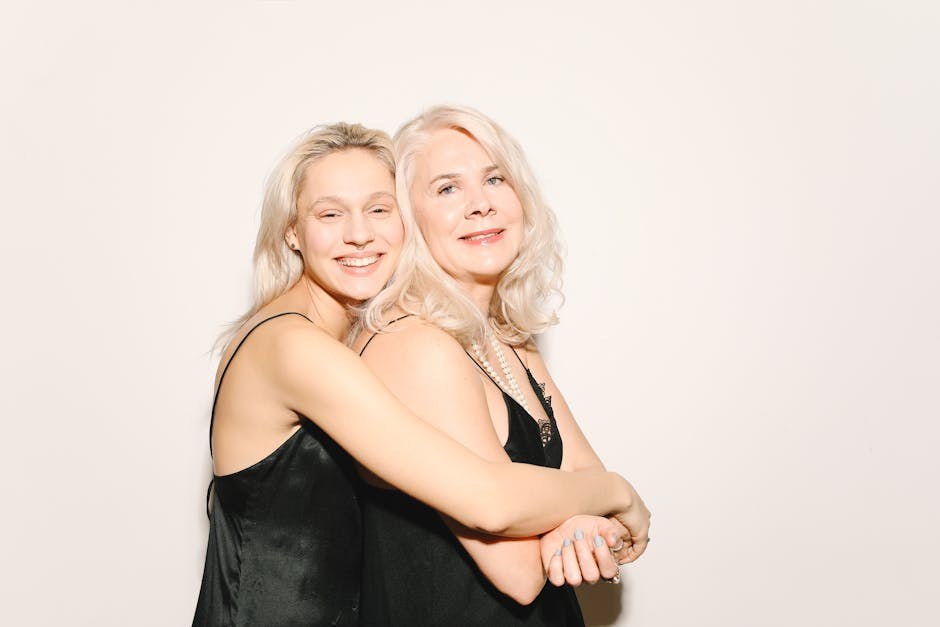Romantic closeness can feel like a warm invitation or a blaring alarm – it depends on the relational blueprint we carry from early life. For many adults, that blueprint includes avoidant attachment, a pattern shaped when a child learns that reaching out for comfort does not reliably lead to connection. This article re-examines that pattern with fresh language and clear examples so you can recognize avoidant attachment, see how it operates in daily life, and find grounded ways to care for a partner – or for yourself – without sacrificing emotional safety.
How early bonds set the template for adult closeness
Attachment describes the bond that forms between an infant and their primary caregivers. Through cycles of noticing distress, responding, and soothing, the infant learns whether other people are a safe base. When those cycles are consistent and kind, a secure template develops – the child explores freely, returns for comfort, and internalizes a steady message: “When I need help, someone will notice and respond.” When responsiveness is spotty or absent, a different template can take shape. In that scenario, avoidant attachment becomes a protective strategy: rely on yourself, mute emotions, and minimize needs so disappointment hurts less.
What children absorb in these early exchanges becomes a working model of relationships that often persists into adulthood. That working model influences how we interpret a partner’s text, how close we sit on the couch, and whether we reveal tender feelings or change the subject. Because that script is practiced for years, it can feel automatic – yet with awareness, it is possible to revise the lines.

Secure versus insecure patterns – the broad map
A helpful way to organize the map of attachment is to distinguish secure patterns from insecure ones. With secure patterns, people are comfortable with both intimacy and autonomy. They expect that closeness will be mostly safe and that separations will be tolerable. In insecure patterns, the person longs for connection but doubts it will be available or safe. Avoidant attachment is one such insecure pattern, and its hallmark is the downplaying of emotion and closeness – not because feelings are absent, but because the person learned to survive by turning the volume down.
It is crucial to underline that avoidant attachment is not a character flaw. It is an adaptation that once made sense. As adults, though, the very habit that reduced childhood pain may block adult intimacy. Recognizing that paradox is the starting point for change.
What avoidant attachment feels like from the inside
People who lean on avoidant attachment often organize their lives to meet needs without relying on others. The inner logic goes something like this: “If I do not ask, I cannot be turned away. If I do not feel too much, I cannot be hurt.” That logic can produce impressive self-sufficiency, but it also creates distance. Partners may describe them as calm during storms, restrained during celebrations, and hard to read most of the time. The person is not uncaring – they are protecting tender territory. Avoidant attachment grows from the belief that care will not arrive or will arrive with strings attached, so it feels safer to downshift emotions and carry on.

Because all humans need comfort, however, the system never truly eliminates feeling – it simply tucks it out of sight. When pressure builds, the avoidant attachment strategy may intensify: fewer disclosures, quicker subject changes, longer stretches of alone time. Understanding this rhythm helps partners respond without taking it personally.
How an avoidant template can form in childhood
Parents who struggle to track and respond to a child’s emotional cues do not necessarily lack love; they may themselves have learned to avoid feelings. In such homes, practical needs might be met, yet expressions of emotion – joy as well as sorrow – are muted or discouraged. Over time, the child learns that turning outward brings little comfort, while turning inward brings control. Avoidant attachment becomes the default setting.
- Caregivers minimize or dismiss tears, telling the child to toughen up or stop crying.
- Expressions of strong feeling – excitement, fear, even delight – trigger withdrawal rather than warmth.
- Affection and touch are scarce, and requests for reassurance are met with irritation.
- Independence is praised beyond the child’s developmental stage, while bids for closeness are framed as weakness.
- Practical needs may be inconsistently addressed, and emotional needs are largely overlooked.
- Some caregivers are depressed, highly reserved, or preoccupied, making presence feel unpredictable.
Children in such contexts do what resilient children do: they adapt. They mute needs, reject help, and craft competence. As adults, those same moves still operate – but now they complicate friendship and romance. Naming avoidant attachment is not about blame; it is about understanding the origin of a pattern so it can be revised.

Two common variations of avoidant attachment
Although every person is unique, avoidant attachment often shows up in two recognizable flavors. Knowing the difference can illuminate contradictory behaviors that otherwise seem confusing.
Dismissive-leaning patterns emphasize self-reliance. The person keeps partners at a respectful distance and may treat emotions like background noise. They can appear ultra-composed – even during breakups or conflicts – and they may say things like “I’m fine” when something clearly stings. The internal shield is “I don’t need anyone.” That stance is protective, yet it makes genuine closeness hard to sustain.
Fearful-leaning patterns swing between wanting closeness and fearing it. When they sense a partner drifting, they reach out intensely; when closeness deepens, they retreat, worried that vulnerability will invite pain. Partners often describe a push-pull cycle that leaves both people exhausted. Here the internal conflict is “I want you close – but I’m not safe if you are.” Both variations sit under the umbrella of avoidant attachment; the pacing and triggers simply differ.
Daily signs that point toward an avoidant pattern
Clues show up in small moments – where one person naturally leans in, another instinctively steps back. The following signs gather common threads without pathologizing normal human differences. A pattern emerges when many of these signs cluster together over time.
- Physical affection feels loaded. Hugs, hand-holding, or casual touch may stir discomfort, so the person limits contact to what feels manageable.
- Eye contact is fleeting. Sustained gaze can feel intimate, so they glance away or focus on tasks to reduce intensity.
- Control around routines. Eating, sleeping, or daily rituals may become tightly managed because predictability lowers emotional noise.
- Help rarely requested. Asking can feel risky, so they solve problems solo even when support is available.
- Preference for space. Seating choices, room arrangements, and schedules often preserve a buffer of distance.
- Partners labeled as “needy.” Requests for closeness are misread as demands, prompting withdrawal.
- Emotions are hard to name. Feelings register as vague tension rather than discrete states that can be shared.
- Support is declined. Even loving offers land as intrusive, leading to polite refusal or silence.
- Fear of being hurt. Past experiences of rejection make the present feel precarious, so they step back when intimacy rises.
- Stress is handled alone. During tough weeks, they go inward rather than leaning on a partner.
- Reciprocal reliance is uneasy. Being someone’s go-to person can feel heavy, so they limit what others can expect.
- Freedom is highly valued. They prefer arrangements that allow choice and movement without frequent check-ins.
- Calm during crises. In heated moments, they appear cool and rational – a strength that can double as emotional distance.
- Emotional closeness feels awkward. Deep talks may be brief, surface-level, or redirected to practical topics.
- Feelings get pressed down. The strategy is suppression rather than expression; relief comes from activity, not sharing.
- Complaints seem pointless. Voicing frustration once led nowhere, so they opt for stoicism.
- Indirect communication. When bothered, they drop hints or grow quiet instead of stating needs plainly.
- Patchy memories of early years. Difficult times may be walled off, making childhood feel fuzzy.
- Rejection looms large. To avert it, they preemptively detach or say “I don’t mind” when they do.
- High self-sufficiency. They excel at being on their own and may guard that skill fiercely.
- Guarded view of others. Expecting disappointment, they keep expectations of people low.
- Self-comfort prioritized. Personal routines and preferences can overshadow a partner’s needs.
- Touch-and-go intimacy. Affection may be easier in sexual settings than in emotional ones, preserving distance while meeting some needs.
Any one sign can be part of a healthy personality. It is the clustering – and the function of maintaining distance – that suggests avoidant attachment is at play.
How avoidant attachment shows up in adult relationships
In dating, avoidant attachment can keep things casual by design. Hookups or low-commitment arrangements reduce the pressure to share feelings, which can feel safer. If a relationship becomes more committed, anxiety may rise – the person senses expectations they fear they cannot meet. They might work late, prioritize solo hobbies, or argue about small logistics rather than discuss deeper worries. From the outside, this can look like indifference; from the inside, it feels like survival.
When a partner asks for reassurance, the avoidant attachment pattern may interpret the bid as control. That misread sets off a familiar cycle: one person protests the distance, the other distances more. Over time, both feel unseen. Recognizing that cycle – and labeling it as a strategy, not a verdict – is the first de-escalation step.
Dismissive-leaning dynamics in partnership
For people who lean dismissive, friendship may feel easier than romance because it features side-by-side activity with fewer demands for emotional exposure. Love is not absent; it is reframed as loyalty, reliability, and respect. During stress, they might convert feelings into tasks: fix the sink, organize the calendar, tidy the room. Those moves are useful, yet their partner may long for verbal comfort. If that partner pushes for it, the dismissive-leaning person can feel cornered and respond with silence or bluntness – a protective wall rather than a punishment. Naming avoidant attachment here helps both people translate gestures accurately.
Fearful-leaning dynamics in partnership
For people who lean fearful, intimacy feels like weather that changes quickly. When they sense distance, they reach out passionately; when closeness grows, they feel exposed and retreat. This push-pull is confusing on both sides. The person is not fickle; two alarms are ringing at once – the alarm to connect and the alarm to run. Gentle pacing, explicit agreements about space and contact, and predictable check-ins can soothe both alarms over time within the frame of avoidant attachment.
Practical ways to love someone who uses distance to cope
If you care for a partner who relies on avoidant attachment, you can support them without abandoning your needs. The aim is not to “cure” a personality but to co-create a climate where both safety and closeness can grow.
- Lead with patience. Remember that distancing once kept them safe. Quick fixes rarely work; slow consistency does.
- Offer safety cues. Reassure without crowding. Phrases like “We can slow down” or “No rush – I’m here” can lower defenses.
- Define needs clearly. Ask how they understand words like “need” and “support.” Shared definitions reduce misunderstandings.
- Resist control. Attempts to micromanage contact backfire. Invite collaboration on routines that honor both people’s comfort zones.
- Affirm alone time. Offer solo space before they ask. Proactive permission turns withdrawal into restoration.
- Protect their focus time. Avoid surprise calls or texts during deep-work periods. Agree on windows for connection.
- Do not personalize cool moments. If they step back, recall the function of the strategy: protection, not rejection. Address the pattern later when both are calm.
When children are involved: preventing the cycle
Attachment patterns begin early, so prevention happens in the nursery, not in adulthood. Caregivers can interrupt the intergenerational loop by tuning in, naming feelings, and meeting emotional needs with warmth and predictability. That does not mean granting every wish; it means helping little ones feel seen and soothed so they internalize the message that closeness is safe. Adults who recognize avoidant attachment in themselves often become particularly motivated to offer to their children what they missed – attentive presence, consistent comfort, and permission to feel.
Growth and support: what change can look like
Because avoidant attachment is a learned strategy, it can be unlearned with practice. Therapeutic work offers a structured space to notice automatic moves, experiment with new ones, and build tolerance for closeness. Approaches that focus on thoughts, feelings, and behaviors can help people track body cues, name emotions, and try graduated steps toward openness. The goal is not to swing to the opposite extreme but to expand the range: autonomy and connection, problem-solving and comfort, silence and sharing.
Outside therapy, small experiments also matter. Share one feeling sentence a day. Accept one offer of help a week. Practice lingering eye contact for a few extra seconds. These micro-reps build the muscle that avoidant attachment has kept underused. Partners can help by celebrating each step rather than measuring progress harshly.
Self-reflection for those who recognize the pattern
Honesty is the entry point. If you see avoidant attachment in your own life, start by observing when distance feels necessary. What does your body do first – go still, get busy, change the subject? Which situations cue the strongest pull to retreat? Map those patterns without judgment. Next, ask which moves truly serve you and which cost you connection you quietly desire. That question is practical, not moral. Avoidant attachment helped you survive; now you can decide where it still fits and where it blocks what you want.
Then experiment with alternative scripts. When conflict rises, instead of disappearing into tasks, try stating, “I want to calm down and will check back after dinner.” When a partner asks, “Are you upset?” replace “I’m fine” with “I’m tense and need a few minutes.” These statements protect space while keeping the channel open. Over time, such micro-shifts loosen the old template without tearing it up overnight.
What partners can watch for in themselves
Living alongside avoidant attachment can stir your own patterns. If you chase harder when they step back, you might feel anxious; if you shut down in response to their shutdown, you might feel numb. Track your pattern too. Boundaries help: decide what level of contact you need to feel steady, and communicate that clearly. Replace mind-reading with check-ins. Praise genuine efforts rather than demanding sudden transformation. In short, treat the relationship as a shared project – two nervous systems working out a rhythm that honors both autonomy and intimacy.
Putting it all together
Attachment is the story we tell ourselves about closeness. For some, the story says, “You are safe with others.” For others, avoidant attachment wrote an early chapter that says, “You are safest on your own.” Adults are not stuck with the first draft. With language for what is happening, compassion for why it developed, and practice in new responses, people can widen what is possible in love – steady presence without pressure, warmth without engulfment, and connection that respects the need for space.
If this description of avoidant attachment resonates with you or someone you love, treat that recognition as an opening. You are not broken – you are patterned. Patterns can change. Start where you are, proceed gently, and let the bond you are building today send a new message: your feelings matter, your needs are legitimate, and closeness can be something you choose rather than something you evade.